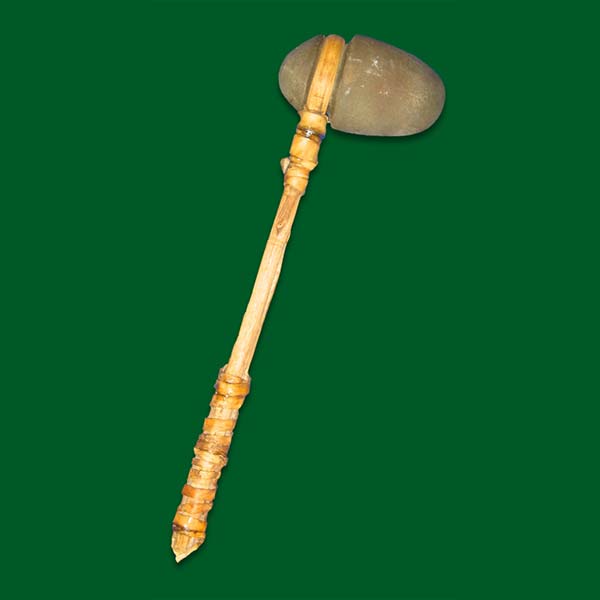- Joined
- Mar 8, 2008
- Messages
- 26,080
If trying to Google them, the term "neolithic hammer axe" tends to turn up plenty of results. Here are some images of them in-hand showing that many of them are quite small, like a lot of stone and bronze axes tend to be.


It's worth noting that many of them have decently long geometries that support thinner edges.

And many have been found with very crisp edges.

And it's also noteworthy that some of the somewhat stubbier ones show signs of the same kind of thickening through the edge-to-cheek transition that we're used to seeing on old heavily-worn steel axes.

While I haven't been able to turn up much good scholarly info on wear pattern analysis, there are some notes describing how many of them are seemingly devoid of wear and therefore were likely ceremonial in nature or status symbols. However, as they're common burial finds, it's very likely that the shorter/thicker ones are simply very worn down tools that began their life longer and thinner and were ground back as they wore or took damage. Upon the death of their original owners, it's very likely that their axe was already kept in good repair or else would have been polished back to immaculate condition before being deposited in the grave, which would have erased most signs of wear since you'd have a fresh, polished surface. I think it very unlikely that they were purely status symbols in most cases and almost certainly had a practical use, but would have been a prized possession.


It's worth noting that many of them have decently long geometries that support thinner edges.

And many have been found with very crisp edges.

And it's also noteworthy that some of the somewhat stubbier ones show signs of the same kind of thickening through the edge-to-cheek transition that we're used to seeing on old heavily-worn steel axes.

While I haven't been able to turn up much good scholarly info on wear pattern analysis, there are some notes describing how many of them are seemingly devoid of wear and therefore were likely ceremonial in nature or status symbols. However, as they're common burial finds, it's very likely that the shorter/thicker ones are simply very worn down tools that began their life longer and thinner and were ground back as they wore or took damage. Upon the death of their original owners, it's very likely that their axe was already kept in good repair or else would have been polished back to immaculate condition before being deposited in the grave, which would have erased most signs of wear since you'd have a fresh, polished surface. I think it very unlikely that they were purely status symbols in most cases and almost certainly had a practical use, but would have been a prized possession.



